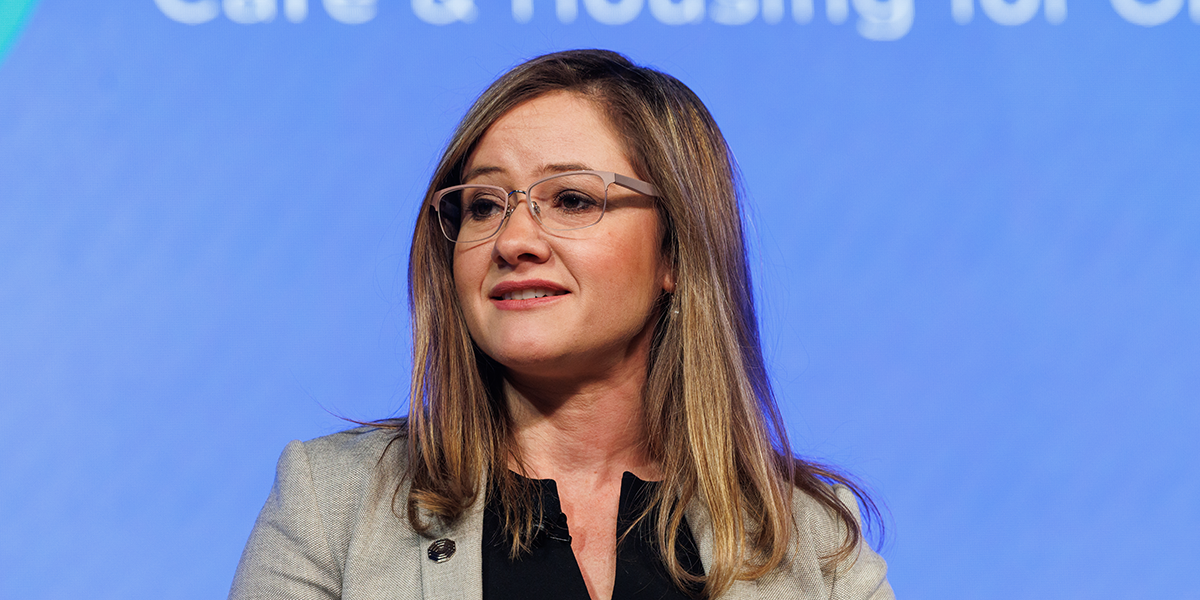2022 NIC Spring Conference Session: “Debt & Equity Trends in Senior Living.”
With the Federal Reserve taking aggressive steps to curb inflation by raising interest rates through several hikes, senior living stakeholders are sizing up the possibilities of a slowing economy and higher debt costs. The labor shortage is another big concern.
Despite the headwinds, investors, lenders, and borrowers remain bullish on the senior living sector. Market fundamentals are continuing to improve as, hopefully, the pandemic recedes while a big surge of aging baby boomers is finally on the horizon.

“The industry has a lot of tailwinds,” said Elliot Pessis, managing director at Harrison Street, a Chicago-based investment fund. “That’s why we are long-term investors.”
Pessis joined a panel of lenders and investors during a session on debt and equity trends at the recent 2022 NIC Spring Conference in Dallas. Session moderator Morgin Morris, senior vice president, KeyBank Real Estate Capital, kicked off the discussion with a lightning round on key economic indicators.
The panel agreed interest rates will move higher, but cap rates could hold steady due to the high amount of liquidity in the market. The labor situation should gradually improve as more people return to work and the labor force participation rate rises.
In an innovative twist, session panelists were asked questions by industry stakeholders on video. The first question addressed the impact of higher interest rates.
Costs will rise, but the panelists expect to see more creative financing packages. “There’s a ton of deal volume out there,” said panelist Jessica Johnson, managing director, Healthcare Banking, Western U.S., BOK Financial. “But the deals that pencil out are harder to come by and it takes more work to get there.” She added that the focus is on high quality operators that understand the senior living sector and know their local market.
Selective Funding for Development
Another video questioner asked about financing trends for new construction vs. value-add acquisitions.
New development will continue to remain at a relatively low volume for now, according to panelist Darrin Smith, executive vice president, Investments, Sabra Health Care REIT. He cited the reasons as compressed operating margins because of the labor shortage and the rising costs of lumber and other materials putting the total cost to build under pressure. The silver lining is that the product that came on the market during the pandemic will be absorbed, he said.
Construction deals are picking up at BOK Financial, according to Johnson. Projects put on hold during the pandemic are now starting to seek funding. “Developers and equity partners are getting comfortable with the fact that they will have to accept lower returns initially and then increase rents over time,” she said.

Johnson noted the tremendous amount of equity in the market fueling interest in new development. Also, more lenders are getting into the space to put their money to work. Rates and cost of funds are rising, but spreads are compressing, she noted, helping to counteract the hikes. “Banks are becoming more competitive,” she said.
Harrison Street is partnering on development deals but focuses on higher barrier-to-entry markets. “We are being very judicious with capital,” said Pessis. He hasn’t seen many distressed property sales, a situation he attributes to lenders that stepped up during the pandemic to help their borrowers in addition to the resiliency of the sector.
BOK’s Johnson noted that skilled nursing properties benefited from federal government assistance during the pandemic. Some states have also helped by raising Medicaid rates, according to Sabra’s Smith. Florida, for example, recently passed a 7% increase in Medicaid reimbursement rates for nursing homes.
Lenders are watching capital expenditures. They want to know the building will still be a high-quality asset at the end of loan term. “We need to make sure there is reinvestment in the building,” said KeyBank’s Morris.
Underwriting Under Review
The pandemic has altered underwriting standards, the panelists said.
The most recent Ziegler NIC Lender Survey showed a wide variety of underwriting parameters leading to various valuations. Some lenders are underwriting COVID-related expenses but not the funds received to help support operations. Other lenders are underwriting all revenues and expenses. “Borrowers need to understand why and how lenders are underwriting the deals,” said panelist Don Husi, managing director at Ziegler Capital Markets.

Another big challenge is how to underwrite labor costs. Financial models should include a wage sensitivity analysis, according to Sabra’s Smith. “Partner with the right operators that understand labor issues,” advised Smith. In many cases, the panelists said, labor expenses are offsetting rental rate increases.
New debt trends are impacting the market. Banks are eager to lend, and debt funds are getting more creative, but bond buyers are risk averse, the panelists said.
Lenders are focused on the quality of operators and finding ways to bridge the gap when a property has upside, but insufficient cash flow. BOK Financial is working more with mezzanine lenders and structuring revolving credit facilities so owners can leverage as much equity as possible.
In wrapping up, the panelists expect some continued pain over the next 12-24 months as the sector continues to recover from the pandemic. But their overall outlook for the industry is quite optimistic given its resilience and the growth of the aging population. “A challenging environment is nothing new,” said Johnson. “Our industry is needs-based and will be more so in the future as baby boomers age.”
About NIC
The National Investment Center for Seniors Housing & Care (NIC) is a nonprofit 501(c)(3) organization whose mission is to support access and choice for America’s seniors by providing data, analytics, and connections that bring together investors and providers.
Connect with NIC
Read More by NIC